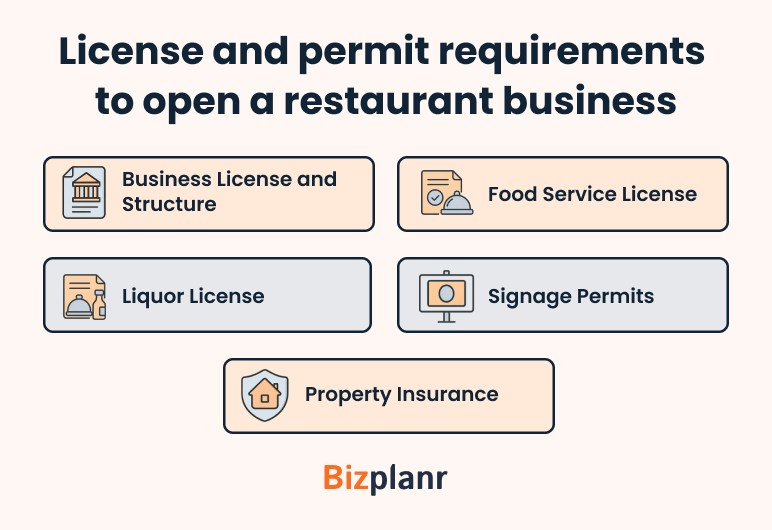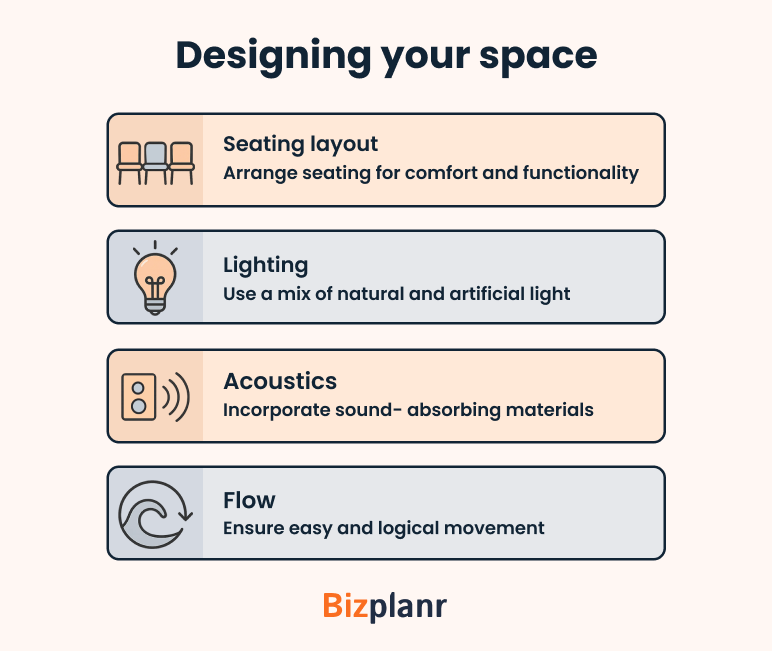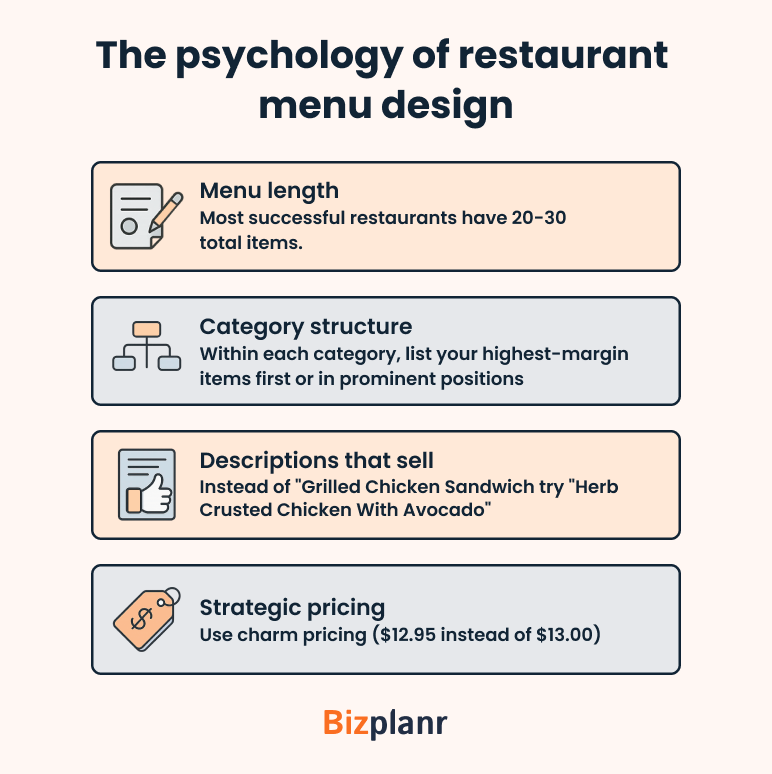Congratulations! You've officially become that person—the one who critiques every restaurant meal, insists your grandmother's recipe could "change everything," and has strong opinions about why the corner café is doing it all wrong.
Your friends politely nod when you describe your restaurant dreams. Your family keeps asking when you're actually going to do something about it. Well? They have a point.
The U.S. restaurant industry is heading toward $1.5 trillion in sales by 2025, which sounds amazing until you realize half your neighborhood probably has the same brilliant idea. The difference between dreamers and owners? A solid plan and the guts to execute it.
Ready to stop being the critic and start being the boss? Let's begin.
Key Takeaways
- The cost of opening a restaurant business varies depending on location, rent, and customer needs.
- The average cost of opening a restaurant is $95,000 to over $2 million.
- Restaurant design, space, and menu impact the restaurant's success the most.
- In this blog, we’ll explore how much it will cost to start a restaurant, the process, and things to consider while opening a restaurant.
Step 1: Define your concept behind the restaurant
This is where most people get it wrong. They think, "I want to open an Italian restaurant", and call it a day. But your concept is so much more than just picking a cuisine—it's the soul of your entire business.
Before you pick a name or print a menu, you’ve got to decide what kind of restaurant experience you’re creating. And it’s more than just food—it’s about how people feel when they walk in, eat, and leave.
Hence, decide the type of experience you want to provide your customer:
- Fast casual: Order at the counter, no servers, quick meals, affordable prices.
- Sit-down restaurant: Full service with servers, a relaxed dining pace, and a complete experience. It can range from casual to fine dining.
- Themed or minimalist: A themed restaurant (like a sports bar or retro diner) builds its entire vibe around a specific idea.
- Community-focused or high-end space: High-end spots offer a premium, exclusive experience with fine details, upscale menus, and higher price tags.
Once you nail down your concept, it becomes your North Star for every decision you make.
Let's say you're creating a "neighborhood bistro focused on seasonal comfort food with craft cocktails." Here's how that concept shapes your business:
- Branding becomes warm and approachable–think earth tones, maybe some chalkboard menus, comfortable lighting that makes people want to settle in for the evening.
- Pricing sits in that sweet spot where locals can afford to come regularly, but you're not competing with fast food. Maybe $12-18 for entrées, $8-12 for cocktails.
- Menu changes with the seasons, features comfort classics with a modern twist, and pairs beautifully with your drink program.
- Service style is warm and knowledgeable, with servers sharing the story behind your ingredients and offering spot-on drink pairings.
Step 2: Conduct market research and local feasibility
Now that you have a solid concept, figure out if there are enough people who want what you're offering—and if they're willing to pay for it. Market research might sound boring, but it's actually like detective work.
So, how’ll you get started with market research? Start by spending serious time in the areas you're considering. Visit during morning rush hour, lunch time, happy hour, and weekend evenings.
Sit in coffee shops and observe the foot traffic. Are you seeing young professionals grabbing quick lunches? Families with kids looking for casual dinner spots? Empty nesters who have time for leisurely meals?
Remember, each group has different needs, budgets, and dining habits.
Above that, note every restaurant within a 10-minute drive of your potential location, then categorize them into:
- Direct competitors
- Indirect competitors
- Complementary businesses
This will help you spot market gaps, understand local demand, and position your restaurant uniquely.
Step 3: Prepare a detailed business plan
I know, writing a business plan feels about as exciting as doing your taxes. But here's the thing—this document is going to save you from expensive mistakes and help you secure the funding you need.
Plus, when you sit down to write your business plan, you'll realize there are tons of things you hadn't thought about yet. Remember, entrepreneurs with a business plan are 260% more likely to launch their business compared to those without a plan.
Hence, prepare a compelling business plan that helps you grow faster and safer, keeping you ahead of your competition.
Here's what a business plan includes:
- Executive summary
- Your restaurant concept and unique value proposition
- Target market and location
- Key financial projections
- Your background and why you're the right person to make this happen
- Funding requirements and how you'll use the money
Remember, writing a business plan can feel overwhelming at first, but if you get it right, you’ve already completed half the journey.
Build a Professional Business Plan In Minutes
Answer a few questions, and AI will generate a complete business plan
Step 4: Break down the real costs of starting a restaurant
I’ve seen many entrepreneurs and startup owners saying, “I think I need around $200,000" when asked about exactly how much they'll need to start their business.
Honestly, this answer is like taking a shot in the dark. The probability of hitting the target is almost zero. So, sit at the table and break down the real cost of starting a restaurant first.
Now, let's first estimate the cost of mid-size and small businesses:
| Expense Category | Small Restaurant (30-50 seats) | Mid-Sized Restaurant (80-120 seats) |
|---|---|---|
| Renovation & Interior Setup | $20,000 – $50,000 | $50,000 – $150,000 |
| Kitchen Equipment | $30,000 – $60,000 | $60,000 – $150,000 |
| Permits & Licenses | $2,000 – $20,000 | $5,000 – $30,000 |
| Opening Marketing & Promotions | $2,000 – $5,000 | $5,000 – $10,000 |
| Total Startup Costs | $54,000 – $135,000 | $120,000 – $340,000 |
Monthly operating costs (After opening)
| Expense Category | Small Restaurant | Mid-Sized Restaurant |
|---|---|---|
| Rent/Lease | $3,000 – $8,000 | $8,000 – $20,000 |
| Staff Wages | $10,000 – $25,000 | $25,000 – $60,000 |
| Food & Beverage Supplies | $8,000 – $15,000 | $15,000 – $35,000 |
| Utilities (Gas, Electric, Water, Internet) | $2,000 – $5,000 | $4,000 – $8,000 |
| Marketing & Advertising | $500 – $2,000 | $1,500 – $5,000 |
| Miscellaneous Repairs/Expenses | $500 – $2,000 | $1,000 – $3,000 |
| Total Monthly Costs | $24,000 – $57,000 | $54,500 – $131,000 |
Remember, always keep 3–6 months of expenses in reserve—new restaurants need time to turn steady profits, and surprises happen.
Example:
If you’re opening a small restaurant with monthly expenses of $30K, set aside $90K–$180K as a reserve. Likewise, for a mid-sized restaurant with $75K in monthly costs, keep at least $225K–$450K in backup funds.
It’s your safety net while the business ramps up.
Step 5: Explore smart funding options
Unless you have a few hundred thousand dollars sitting in your savings account, you need to secure funding for your restaurant. The good news? There are several options. The challenging news is that each comes with its requirements and trade-offs.
Here are a few smart funding options that you can use to raise money:
- Personal investment: Most lenders expect you to contribute 20–30% of the total cost. If your project’s $300K, you’ll need $60K–$90K of your own money.
- Traditional bank loans: Lower interest rates, but require strong credit (650+), a solid business plan, collateral, and take 30–90 days to approve.
- SBA loans: Backed by the government, easier for banks to approve, with better terms, but need more paperwork and longer approval times.
- Investors: They bring money (and possibly advice), but you’ll give up some ownership and control. Choose investors who know the restaurant game and align with your vision.
Step 6: Navigate licenses, permits, and regulations
The legal side of opening a restaurant isn't glamorous, but it's absolutely essential. Cutting corners here can result in fines, closure, or worse, lawsuits that could destroy your business.
Here’s an essential list of license and permit requirements to open a restaurant business:
1) Business license and structure
Register your business with local and state authorities. Choose your business structure (LLC, corporation, partnership) carefully; it affects your taxes and personal liability.
2) Food service license
Your local health department will inspect your facility and operations. This isn't just a formality; they're making sure you can safely serve food to the public.
3) Liquor license
If you plan to serve alcohol, start this process early. Liquor licenses can take 3-6 months to obtain and involve significant fees. In some areas, licenses are limited and must be purchased from existing license holders.
4) Signage permits
Check local zoning laws for signage restrictions. Some areas have strict rules about sign size, lighting, and placement.
5) Property insurance
Covers your equipment, inventory, and improvements if there's a fire, theft, or other covered loss.
Step 7: Design the space around the experience
Here's something most people get wrong about restaurant design: They think it's all about making the place look pretty. But your restaurant's design is actually your concept made visible, and it needs to work as hard as your team does.
So, if you want to make your restaurant space look perfect, consider the following factors while designing your space:
1) Seating layout
Balance capacity with comfort. Cramming in too many tables makes the space feel chaotic, but too few tables hurts your profitability. Thus, aim for a layout that maximizes seating without compromising on guest comfort and smooth movement for staff.
2) Lighting
This is huge and often overlooked. Bright fluorescent lighting kills ambiance, while too-dim lighting makes it hard to read menus and creates safety issues. Layered lighting with dimmers gives you flexibility.
3) Acoustics
Hard surfaces create noise problems when the restaurant is busy. Add sound-absorbing materials strategically to maintain conversational comfort—Utilise titles or wood that make your space look rich and stylish.
4) Flow
Design clear paths for servers and customers. Bottlenecks near the entrance or restrooms create frustration and slow service. Thus, design your restaurant space in a way that keeps your busy areas like the entrance and exit clear for customers and staff.
Along with designing your restaurant space, it’s equally important to thoughtfully plan your kitchen layout. Key considerations for kitchen layout include:
- Workflow from prep to plate to dishwasher
- Adequate refrigeration and storage
- Proper ventilation and fire suppression
- Easy-to-clean surfaces and equipment placement
Step 8: Create a menu that fits your concept and margins
Your menu is where your restaurant concept meets reality—and where you either make money or lose it. So, let's talk about creating a menu that customers love and that makes you money.
Start with your concept, not your favorite dishes
A restaurant shouldn't have a 47-item menu, and your fast-casual concept shouldn't feature dishes that take 45 minutes to prepare. Instead, your menu needs to answer these questions:
- Does every dish fit my restaurant concept and target customer?
- Can my kitchen execute these items consistently during rush periods?
- Are the ingredients readily available and affordable year-round?
- Do these dishes work within my price point and profit margins?
Menu engineering: The science of profitability
Every item on your menu falls into one of four categories, and understanding this will transform how you design your menu:
Pricing for profit, not just competition
Here's the formula that works:
Food Cost ÷ Target Food Cost Percentage = Menu Price
If your signature burger costs $4.50 in ingredients and you want a 30% food cost, your menu price should be $4.50 ÷ 0.30 = $15.00.
Common food cost targets:
- Appetizers: 25-30%
- Entrees: 28-35%
- Desserts: 20-25%
- Beverages: 15-25%
The psychology of menu design
Here’s how it works:
Step 9: Build and train your core team
Your team makes or breaks your restaurant. Great food can't overcome poor service, and excellent service can make customers forgive minor food issues. Invest in finding and training the right people.
Here are the essential positions you should fill when opening your restaurant:
1) Kitchen Manager/Head Chef
This person is responsible for food quality, kitchen operations, and often menu development. Look for someone whose culinary style aligns with your concept and who has management experience.
2) Front-of-house manager
They oversee service, staff scheduling, customer relations, and often handle administrative tasks. Strong communication skills and previous restaurant management experience are essential.
3) Servers
Hire based on personality and work ethic first, experience second. Restaurant skills can be taught, but a positive attitude and strong work ethic cannot.
4) Cooks and prep staff
Look for reliability and willingness to learn. Kitchen work is physically demanding and fast-paced, so stamina and the ability to work under pressure are important.
And remember, don’t hesitate to invest in proper staff training. Even experienced professionals need to align with your restaurant’s service style, standards, and safety protocols.
Step 10: Promote with a local-first marketing plan
You could have the tastiest biryani or the crispiest pizza in town, but if no one hears about it, your kitchen will stay empty. That’s why marketing isn’t a luxury—it’s survival.
Now, when it comes to marketing, a lot of folks jump straight to social media ads and influencer collabs. That’s fine, but for a restaurant—especially when you’re just starting—local marketing is your secret weapon.
Why? Because your first and most loyal customers will likely come from within a 3-5 km radius of your place. Win them over, and you’ll have a steady stream of regulars.
Here’s how you do it:
Step 11: Final setup and soft launch
Now that your kitchen’s ready, your team’s trained, and the marketing wheels are turning—get your restaurant operational. But don’t rush into a grand opening just yet. A soft launch is your chance to test the waters, fix any issues, and polish the experience before going full throttle.
Here’s what to handle in your final setup:
- Test all equipment: Run your kitchen like it’s a real service day.
- Stock up smartly: Double-check your inventory levels for the opening week.
- Final clean-up: Deep clean your space one last time. A spotless kitchen and dining area make a great first impression.
- Staff dry runs: Organize mock service sessions. Let your team practice taking orders, serving dishes, and handling mock customer scenarios.
In summary, opening a restaurant can feel overwhelming at first. But with careful precision, a solid business plan, and the right execution, you can turn your dream into reality.
Conclusion
By going through this blog, one thing is clear: Starting a restaurant is a challenging but incredibly rewarding journey.
Sure, there’ll be tough days, slow nights, tricky permits, or a recipe that just won’t work, but that’s part of the ride. Stay steady. Keep learning. And when things feel overwhelming, tools like Bizplanr can help take the pressure off by organizing your plan and guiding your next steps.
You’re not alone in this. There’s a whole community out there rooting for you. So, as you open your doors and hear those first happy orders, take a moment to be proud. You’ve earned it.
Get Your Business Plan Ready In Minutes
Answer a few questions, and AI will generate a detailed business plan.
Frequently Asked Questions
How much does it cost to start a restaurant?
On average, many restaurant startups spend in the range of $95,000 to over $2 million to open a new eatery. Leasing typically costs around $159 per square foot, with annual rent and building expenses ranging between $40,000 and $150,000.
What licenses and permits are required to open a restaurant?
You’ll typically need a business license, food service permit, health department clearance, fire safety certificate, signage permit, and, if you’re serving alcohol, a liquor license. Requirements vary by state and city, so check with your local municipal office.
Can I start a restaurant with no prior business experience?
Yes—many restaurant owners start without business experience, but you’ll need to learn the basics of budgeting, hiring, and marketing. A solid business plan or guidance from a mentor can help you navigate the learning curve.
How do I choose the right location for my restaurant?
Focus on areas with high foot traffic, easy accessibility, available parking, and a target audience that matches your concept. Also, research nearby competitors and rent costs. A good location balances visibility, affordability, and customer convenience.
What’s the best way to market a new restaurant on a small budget?
Start with local-first marketing:
- Claim your Google Business Profile
- Share menus and offers in local WhatsApp groups
- Partner with nearby offices or communities
- Run opening week discounts
- Use flyers and local posters
- Stay active on social media using local hashtags
- Small, smart moves can create big buzz without breaking the bank
How to start a restaurant with no money?
Starting a restaurant with no money is tough but doable—begin with low-cost models like a cloud kitchen, food truck, or pop-ups, and use catering gigs or small business grants to build funds and test your concept.











